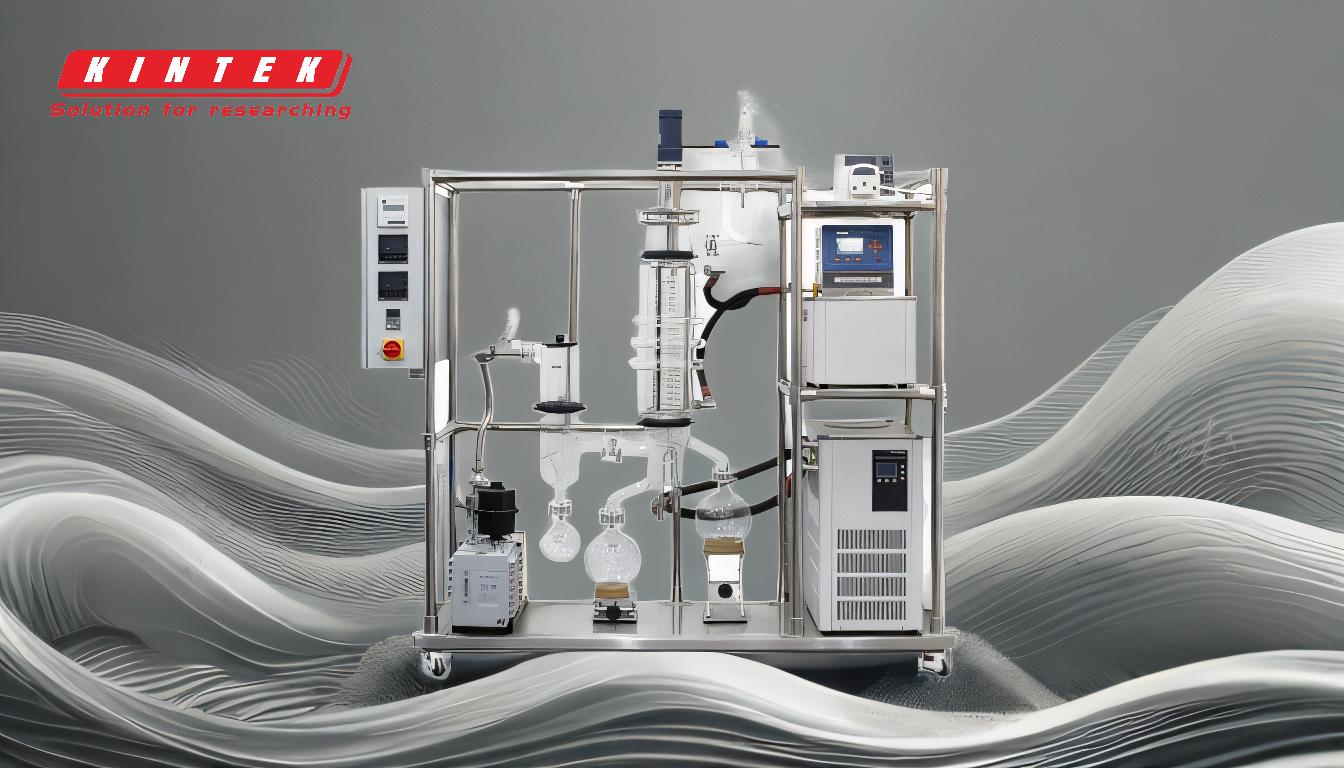The pressure in a vacuum distillation column is a critical factor that influences the efficiency and effectiveness of the distillation process. By reducing the pressure within the column, the boiling points of the substances being distilled are lowered, allowing for separation at lower temperatures. This is particularly useful for heat-sensitive compounds that might degrade at higher temperatures. The vacuum pressure facilitates the movement of vapors from the evaporating flask to the condenser, where they are cooled and collected as distillate. Understanding and controlling the pressure is essential for optimizing the distillation process.
Key Points Explained:

-
Role of Vacuum Pressure in Distillation:
- Lowering Boiling Points: Vacuum pressure reduces the boiling points of substances, enabling distillation at lower temperatures. This is crucial for heat-sensitive materials that could decompose at higher temperatures.
- Facilitating Vapor Movement: The vacuum helps draw vapors from the evaporating flask into the condenser, where they are cooled and converted back into liquid form for collection.
-
Impact of Pressure on Distillation Efficiency:
- Faster Distillation: Lower pressures allow for faster distillation at a given bath temperature, as the reduced boiling points mean that substances vaporize more quickly.
- Energy Efficiency: Distilling at lower temperatures can also be more energy-efficient, as less heat is required to achieve the necessary vaporization.
-
Control and Optimization:
- Pressure Control: Precise control of the vacuum pressure is essential for optimizing the distillation process. This involves using vacuum pumps and pressure gauges to maintain the desired pressure levels.
- Process Optimization: By carefully adjusting the pressure, operators can optimize the distillation process to achieve the desired separation and purity of the distillate.
-
Practical Considerations:
- Equipment Requirements: Effective vacuum distillation requires specialized equipment, including vacuum pumps, condensers, and pressure gauges, to maintain and monitor the vacuum pressure.
- Safety Measures: Operating at reduced pressures requires careful attention to safety, as improper handling of vacuum equipment can lead to accidents or equipment failure.
By understanding these key points, operators can better manage the pressure in a vacuum distillation column to achieve efficient and effective separation of compounds.
Summary Table:
| Key Aspect | Impact on Distillation |
|---|---|
| Lowering Boiling Points | Enables distillation at lower temperatures, ideal for heat-sensitive materials. |
| Facilitating Vapor Movement | Draws vapors into the condenser for efficient cooling and collection. |
| Faster Distillation | Reduces boiling points, allowing quicker vaporization at lower temperatures. |
| Energy Efficiency | Requires less heat, making the process more energy-efficient. |
| Pressure Control | Precise control ensures optimal separation and purity of distillate. |
| Equipment Requirements | Requires vacuum pumps, condensers, and pressure gauges for effective operation. |
| Safety Measures | Ensures safe handling of vacuum equipment to prevent accidents or failures. |
Optimize your vacuum distillation process today—contact our experts for tailored solutions!












